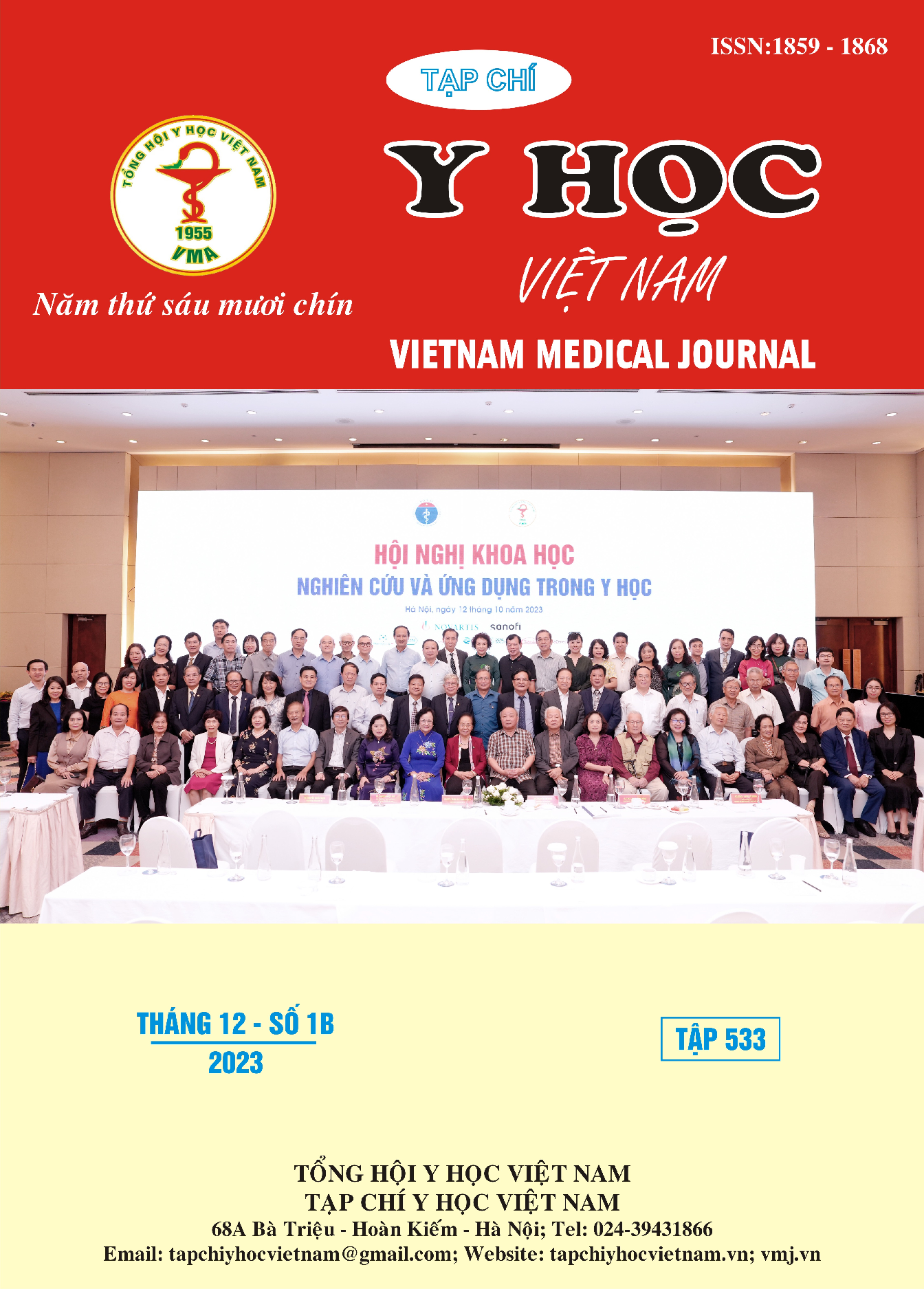SITUATION OF URINARY RESISTANCE WITH BLADDER SONDE INTERVENTION OF POST-BIRTH PREGNANCY AT THE DEPARTMENT OF GENERAL OBSTETRICS - NATIONAL HOSPITAL OF OBSTETRICS AND GYNECOLOGY, 2023
Main Article Content
Abstract
Objectives: Determining the rate of urinary retention of post-birth women with bladder catheter intervention at the National hospital of Obstetrics and Gynecology, 2023. Characteristics of the group of post-birth women who were urinary retention with bladder catheter intervention and treatment at the Department of General Obstetrics, National hospital of Obstetrics and Gynecology, 2023. Method: The cross-sectional descriptive study design on 58 post-birth women in National hospital of Obstetrics and Gynecology from 01/04/2023 to 31/08/2023. Results: The rate of post-birth women with urinary retention requiring bladder catheter intervention during the study period was 58/3875 post-birth women (accounting for 1.5%). The rate of women giving birth vaginally with urinary retention and bladder catheterization was 2.4%, 4.81 times higher than the rate of women giving birth with urinary retention and bladder catheterization, a statistically significant difference with 95% %CI was 2.36-9.83. 58.6% of post-birth women had increased white blood cells before giving birth. 81% of the women in the study group had vaginal births. 100% of urinary retention by-products include guided bladder catheter intervention, bladder catheter placement, and Glycerin Borate pump. 53.4% used smooth muscle strengthening drugs; 22.4% used pain relievers and anti-inflammatory drugs; 17.2% of post-birth pregnant women had to keep a bladder catheter to care for and monitor their urination. As a result of treatment, 93.1% of post-birth women have normal urination; 3.4% of them were referred to oriental medicine specialists. Conclusion: The rate of urinary retention requiring bladder catheter intervention at the Obstetrics Department was high in the vaginal delivery group than in the cesarean delivery group, however, the treatment is quite effectivel.
Article Details
References
2. Nguyễn Đức Thuấn (2013), Nghiên cứu đặc điểm lâm sàng của sản phụ sau đẻ tại Khoa Sản Thường, Bệnh viện Phụ sản Trung ương, Đề tài nghiên cứu khoa học cấp cơ sở, Bệnh viện Phụ sản Trung ương, năm 2013.
3. Fiona M Smaill, Juan C Vazquez, and Cochrane Pregnancy and Childbirth Group (2019), Antibiotics for asymptomatic bacteriuria in pregnancy, Cochrane Database Syst Rev. 2019; 2019(11): CD000490.
4. Nguyễn Thanh Phong và cộng sự (2016), Thực trạng tiểu tiện khó của sản phụ sau sinh tại khoa Sản- Bệnh viện đa khoa Đức Giang, năm 2015-2016, Nghiên cứu khoa học cấp cơ sở, Trường Cao đẳng Y tế Hà Nội, năm 2016.
5. Bộ Y tế. Nhiễm khuẩn hậu sản, Hướng dẫn quốc gia về các dịch vụ chăm sóc sức khỏe sinh sản, 2016, tr.125- 129.
6. Shashi Rai, Abhishek Pathak, and Indira Sharma (2015), Postpartum psychiatric disorders: Early diagnosis and management, Indian J Psychiatry. 2015 Jul; 57(Suppl 2): S216–S221


